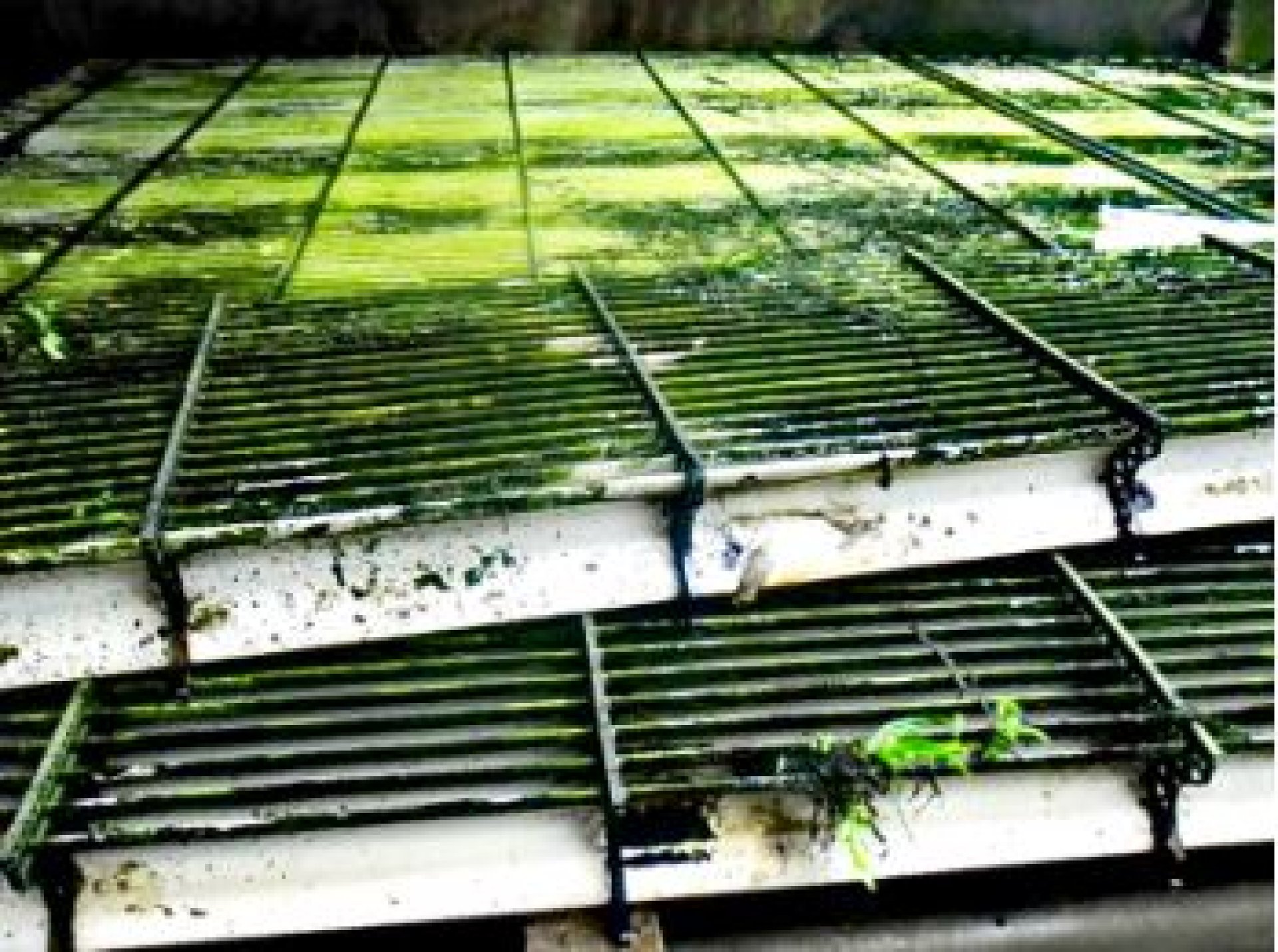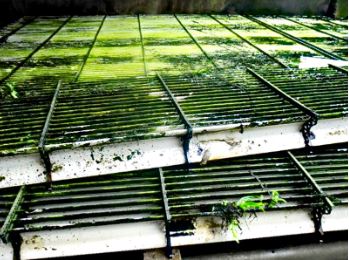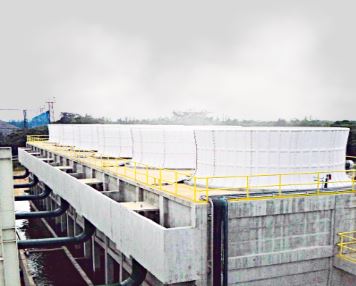Understanding Cooling Tower Water Loss for Profitability

Does the term "cooling tower water loss" sound familiar? Did you know that Water loss plays a significant role in the world of cooling towers and is crucial to maintaining their cooling system efficiency.
Cooling towers are essential components used to reduce the heat generated during manufacturing. Through a heat exchange process within the cooling tower, heated water is cooled. However, water loss occurs during this procedure.
There are three main types of water loss: Evaporation Loss, Drift Loss, and Blow Down Loss.
Evaporation Loss refers to water loss due to evaporation, Drift Loss is the misty water distributed in cooling that is carried away by the wind, and Blow Down Loss is the water loss required to maintain the chemical balance of the water.
In this article, we will delve into the calculations and strategies to counteract cooling tower water loss, ensuring your cooling system operates efficiently and cost-effectively, all while prioritizing water conservation in cooling systems.
To help set the stage for today's discussion, however, I'd like to introduce Innovek Asia to anyone who may be unfamiliar with us, Innovek Asia.
Innovek Asia is your premier destination for cooling tower solutions. Our headquarter is located in Thailand. With more than 15 years of combined expertise, the members of our team have successfully completed a wide variety of projects on a global scale. We provide a wide variety of support to fulfil all of your cooling tower requirements, from the planning and execution of the installation to thorough inspections and ongoing cooling tower maintenance services.
Now that you know who we are, let's dive right into todays topic.
Why is it important to determine how much water is lost in the cooling tower?
As mentioned earlier, calculating water loss is crucial for optimal cooling tower operation.
Evaporation Loss results in the loss of water but not the chemicals present in the water. This leads to an increase in contaminant concentration in cooling systems, raising the risk of scale formation. To counteract this, waste water must be released through Blow Down, and new water must be added as Makeup Water to compensate for the Blow Down loss.

Picture 1: scale formation in cooling tower
To determine how much water to add, it's essential to know the amount of water being lost. Regular cooling tower maintenance, including draining and replenishing, is necessary to prevent the buildup of harmful impurities.

EVAPORATION LOSS CALCULATION
Evap loss = 0.00085 X 1.8 X Water flow rate (m3/hr) X (Hot water temp - Cold water temp
Replace the values in the formula with the data from your cooling tower's Data Sheet to determine the amount of water lost due to evaporation.
Example:
Assume the following values from your Data Sheet:
Water flow: 10,000 M3/Hr
Hot water temp: 42°C
Cold water temp: 32°C
Substitute the values into the calculation:
Evap loss = 0.00085 x 1.8 x 10,000 x (42 - 32)
= 153 M3/Hr
Notes:
- Evaporation Loss is the most significant type of water loss, accounting for up to 1-1.5% of total water loss.
- Evaporation Loss is a natural occurrence and cannot be completely avoided.
DRIFT LOSS CALCULATION
Drift loss = Drift loss rate (%) x Water flow (m3/Hr) / 100
Again, use the values from your Data Sheet to calculate the amount of water lost due to drift.
Example:
Assume the following values from your Data Sheet:
Water flow: 10,000 M3/Hr
Drift eliminator with Drift loss rate: 0.002% of water flow
Substitute the values into the calculation:
Drift loss = 0.002 x 10,000 / 100
= 0.2 M3/hr
Notes:
- Drift loss can be reduced by selecting a suitable drift eliminator for the application.
- The type of Drift Eliminator installed affects the drift loss calculation. Using a low-loss rate drift can considerably reduce water loss through drift.

BLOW DOWN LOSS CALCULATION
Blow down loss = Evap loss ÷ (C.O.C-1)
Here, C.O.C stands for the Cycle of Concentration, which is the amount of solution in the cooling water divided by the amount of solution in the makeup water.
Example:
Assume you have Silica in makeup water at 100 ppm and a C.O.C of 5.
Substitute the values into the calculation:
Blow down loss = 153 M3/hr / (5 - 1)
= 38.25 M3/hr
Notes:
- Blow down loss from the cooling tower is unavoidable and cannot be reduced.
TOTAL WATER LOSS CALCULATION
Total water loss = Evap loss + drift loss + blow down loss
Substitute the values into the calculation:
Total water loss = 153 + 0.2 + 38.25
= 191.45 M3/hr = 1.57%
In conclusion, understanding and managing water loss is essential for maintaining efficient operations and preventing unnecessary expenses. By performing these calculations, you can determine the amount of water needed to replenish your cooling system effectively.
Regular cooling tower maintenance and water replenishment are key to ensuring your cooling tower functions optimally and lasts for years to come. An efficiently functioning cooling tower not only saves water but also helps reduce energy consumption, making it an eco-friendly and cost-effective choice for your industrial water cooling needs.
While these calculations are typically done by cooling tower service providers as part of their cooling tower engineering services, having this knowledge empowers you to address cooling issues promptly and efficiently. With a better understanding of your cooling system's water loss and replenishment needs, you can optimize your cooling tower's performance, saving both water and energy in the process, ensuring cooling system efficiency is essential for overall productivity and cost-effectiveness.
We hope you found this article insightful and informative. At Innovek Asia, we are committed to providing valuable content to our readers, and we're thrilled to have you here whether you're a first-time reader or a familiar face.
If you enjoy our articles and would like to stay connected, there are several ways you can keep up-to-date with our latest updates. While our website doesn't have a subscription feature yet, we've got you covered with multiple ways to stay updated on the latest from Innovek Asia.
Follow our Facebook page for regular updates. Simply click here or search "Innovek Asia" on Facebook to find us. Can't access Facebook? No worries! Add our LINE friends @innovek or click the green button on the right side of the screen. By doing so, you'll receive notifications whenever we publish new articles or share exciting news.
If you have any specific topics or questions you'd like us to cover in future articles, feel free to reach out to us at coolingexpert@innovek.co.th
Your feedback is valuable, and we're here to address your needs.





